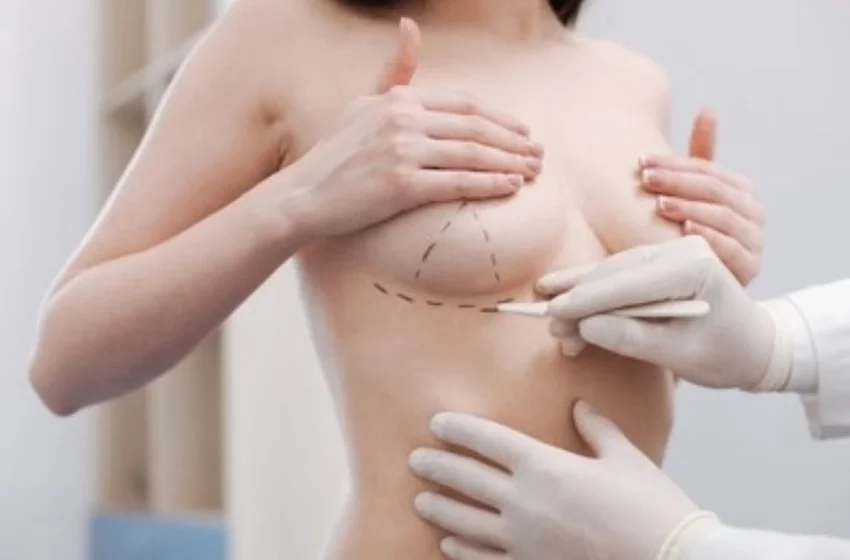
Ins And Outs of DIEP Flap Breast Reconstruction Surgery
Find Out The Ins And Outs of DIEP Flap Breast Reconstruction Surgery
DIEP flap breast reconstruction surgery is a pretty modern autologous tissue reconstruction procedure in plastic surgery. Besides, only a few medical centers have the skills to conduct it successfully.
However, it has become increasingly popular in recent years due to its ability to produce natural-looking results without scarring or disfigurement caused by traditional reconstruction methods such as flap procedures or implants.
In fact, according to a study, the general flap success rate is about 96.9%. So, DIEP is the best option for breast cancer patients.
Well, let’s deep dive into DIEP flap breast reconstruction aspects.
Table of Contents
What is DIEP Flap Breast Reconstruction?
Diep flap breast reconstruction is a breast reconstruction surgery that uses tissue from the abdomen to reconstruct the breast. Plastic surgeons use this procedure often after mastectomy (removal of all or part of the breast) for cancer or other conditions.
Diep flap reconstruction may be combined with other procedures to reconstruct the breast, such as an implant or tissue expanders.
DIEP Flap Reconstruction Procedure
Reconstruction of the breast begins at the time of mastectomy. If radiation treatments are involved, it’s a plus if the surgeon uses temporal breast reconstruction tissue expanders. When radiation treatments elapse, and there’s skin healing—which may take about six months— the tissue expanders are removed to give way for DIEP flap reconstruction.
The doctor uses tissue from your lower abdomen (abdominal flap) to rebuild your breasts during this procedure. The tissue includes fat, skin, and muscle from your belly.
Your surgeon will make an incision near your belly button and remove a small portion of fat, skin, and muscle from your abdomen, which they’ll use to rebuild your breasts.
The doctor will then sew the remaining skin on your belly back together after detaching it from its blood supply in the same way in abdominoplasty or tummy tuck. If needed, the doctor may remove additional tissue from other areas of your abdominal wall to have enough abdominal flap tissue for reconstruction.
They’ll then shape the abdominal flap into a breast mound with the help of suction drains and sutures (stitches). The suction drains keep fluid from building up under the skin during healing so that it doesn’t stretch out too much and lose its new shape before it’s ready for use.
The procedure takes about 4 to 6 hours for flap breast reconstruction on one side, and complete recovery is possible within one and a half months to two months. But it takes three days to about one week for you to go home.
In addition, according to the patient’s preference, and the need, they can plan for further regular operations to improve the rebuilt breast, construct a nipple, or balance the other breast.
Benefits of DIEP Flap Reconstruction Surgery
The DIEP flap has several advantages over other types of breast reconstruction, including:
- DIEP breast reconstruction surgery reconstructs both breasts at once.
- It gives you a natural-looking contour and nipple position.
- It has a high success rate.
- The look and feel are natural.
- It fits the opposite side better, especially if you do not wish to change the look of the opposite breast.
- Ages more naturally than a natural breast.
- When the breast skin has an injury from radiation, it is more dependable.
- Like a tummy tuck, it contours the abdomen.
- It preserves abdominal muscles, retaining core strength and shunning abdominal hernias and bulges.
- There’s lasting and quality life after DIEP compared to breast reconstruction using other techniques.
Who Are the Best Candidates for DIEP Flap Breast Reconstruction?
You may be a candidate for DIEP flap breast reconstruction if you:
- Have undergone a total or partial mastectomy due to breast cancer
- Have adequate abdominal skin on which to place the new breast tissue
- Generally, perfect health since the procedure is more involving. Are you healthy enough to undergo general anesthesia and surgery?
DIEP Flap Breast Reconstruction FAQs
Are there risks with DIEP Flap breast reconstruction?
Yes, there are risks. While the procedure is about 97% effective, DIEP is a major surgery, so some downsides come with it. Even the most excellent microsurgical techniques have about 5% issues with clotting around the connections. Some other common ones are over bleeding, asymmetry, the opening of wounds, infection, fat necrosis, and deep vein thrombosis, to name a few.
But overall, it has been shown to be safe for most women who receive this type of treatment
How long does the procedure take?
It takes less than 6 hours for one breast reconstruction surgery, and you might be bedridden for about a week to monitor the flap and recuperate from the operation.
How long must I wait following chemotherapy or radiation therapy before undergoing reconstruction?
After chemotherapy, one should wait for about 3 to 6 months before DIEP. Within this time is when the body heals. However, after radiation therapy, wait at least six months before undergoing DIEP flap breast reconstruction therapy. During this time, the chest recuperates from the radiation first before undergoing the reconstruction.
Why are the DIEP flap operations not performed by more surgeons?
Due to its intricacy, most plastic surgeons do not do perforator flap breast restoration. It’s complex and challenging, and time-consuming. When a team of microsurgeons conducts the procedure, they attain the best success rates and efficiency. Unfortunately, only a few microsurgical breast reconstruction teams are dedicated to this goal.
Will my insurance cover DIEP flap reconstructions?
Yes. If your insurance company pays for mastectomy, the law requires them to fund your preferred reconstruction process. In case you lack access to a surgeon in your area that can do the type of reconstruction you need, your insurer may cover surgery in another city or state if necessary.
Bottom Line
The DIEP flap is the most intricate type of breast reconstruction. It’s also more costly than other procedures and takes longer to recover from it. If you consider this procedure, talk to your doctor about all the pros and cons before deciding.


